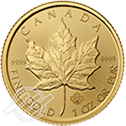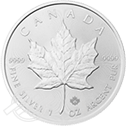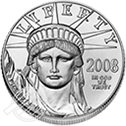The Gold/Silver Ratio
When it comes to investing in gold, silver or other precious metals, we believe that such purchases should be looked at as long-term investments. We believe that precious metals may be beneficial for their potential to hedge inflation, protect purchasing power and also potentially offer a degree of protection from geopolitical risks and economic concerns. That being said, we believe that gold and precious metals should be accumulated over time, and not “traded” in an attempt to time the market.
Determine Relative Value
There is, however, a tool available that is used by some precious metals investors in an attempt to try and determine relative value. This tool is known as the gold/silver ratio.
The gold/silver ratio is simply a ratio that tells one the amount of silver necessary to purchase one ounce of gold. For example, the price of gold today is about $1308 per ounce, while the price of silver is about $19.94 per ounce. By dividing the price of an ounce of gold ($1308) by the price of an ounce of silver ($19.94) we end up with 65.59. If we round, we see that it takes about 66 ounces of silver to equal the value of one ounce of gold.
Now that we know what the gold/silver ratio is and how it is calculated, what do we do with it?
The gold/silver ratio may be used to try and identify times when one metal is relatively more expensive or relatively cheaper than the other. Let’s take a look at some examples.
A Little Ratio History
The gold/silver ratio has averaged about 47 ounces for some time. During the height of the recent bull market in precious metals, that ratio closed to less than 35 ounces. Since gold put in its all-time-high in 2011, that ratio has widened out to over 66 ounces-the level we are currently at today. So, what does that mean? Well, since the ratio is widening and not tightening, we know that silver has gotten relatively “cheaper” compared to gold. This would make sense when one considers the fact that gold is off a bit over 30 percent from its 2011 highs while the price of silver is almost 60 percent lower. Looking at the ratio, this could potentially mean that silver may present more “value” than gold at current levels. Does this mean that one ought to go out and just buy silver? No, absolutely not. What it can potentially do, however, is help an investor acquire more ounces of precious metals faster! Think about it. If one were to buy silver right now over gold, and the ratio begins to move back towards it average levels, then the price of silver may increase faster than the price of gold. Now let’s look at the other side of the coin. Let’s assume for a moment that the ratio goes back to 40. In this case, one may consider an ounce of silver to be “overvalued” compared to an ounce of gold. If one makes this assumption, then he or she may elect to buy gold rather than silver because they feel it presents a better relative “value” at that time.
We are not suggesting that this tool should be used to try and actively “trade” the precious metals markets. We do feel, however, that the gold/silver ratio may be useful in looking for relative value in these assets when compared side by side. If one understands this ratio and knows how to use it properly, it can potentially help one acquire more ounces of gold or silver faster. Needless to say, when one is looking at precious metals as a long-term investment, the notion of accumulation is important. By paying attention to the relationship between gold and silver, one can potentially get the best value for their hard-earned investment dollars.
Talk to an IRA advisor about how to roll over your 401(k) into a Gold IRA by opening a self-directed IRA account, contact us or call us at 800-341-8584 today.



